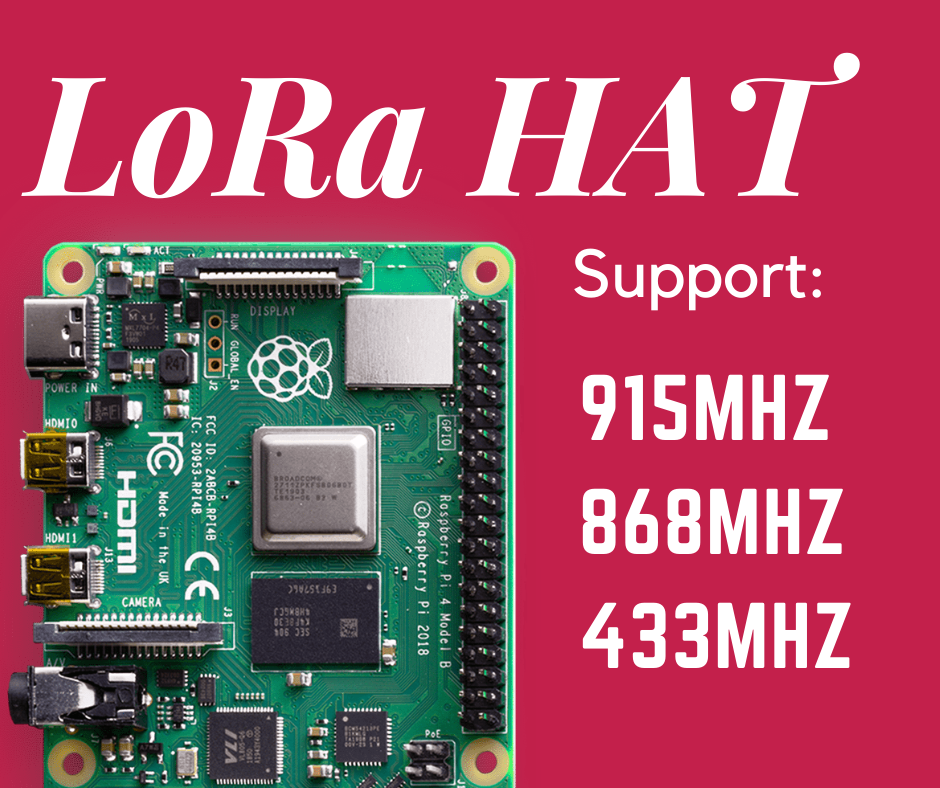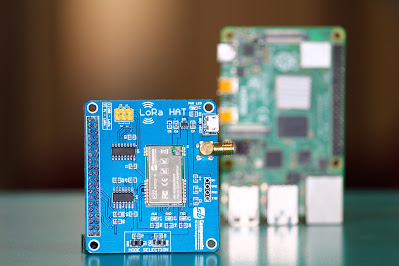The clever, long-range wireless communication technology LoRa™ (Long Range) is facilitating the future of IoT. (Internet of Things).
After launch of Pico LoRaTM Expansion (868MHz & 433MHz) SB Components launched LoRaTM HAT for Raspberry Pi which support 915MHz | 868MHz | 433MHz with Original Semtech SX1262 & SX1268, Communication Range Up to 5 KM and supports Auto Repeating.
Overview of LoRa™ HAT for Raspberry Pi
LoRa™ HAT for Raspberry Pi: LoRa™ HAT, a low-power consumption data transmission module, comes with an onboard CH340 USB TO UART converter, Voltage Level Translator(74HC125V), E22-900T22S and E22-400T22S SMA antenna connector, IPEX antenna connector, LoRa™ Spread Spectrum Modulation technology with auto multi-level repeating.
Also Read: Getting Started with LoRa™ HAT for Raspberry Pi
A consumer can conveniently transfer data in low-power usage using the latest generation LoRa™ spread spectrum modulation technology. With its longer contact gap, lower power consumption, improved protection, and ani-inference method, the E22-900T22S & E22-400T22S SMA antenna connector LoRa™ HAT sets itself apart from standard LoRa™. LoRa™ USB-UART connectivity allows direct communication with a desktop/laptop.
LoRa™ HAT 915MHz | 868MHz | 433MHz Features
- Communication range up-to 5KM
- Supports auto repeating to transmit longer
- Low Power Consumption
- For Evaluating signal quality with the RSSI or "Received Signal Strength Indicator"
- Wireless parameter configuration support
- Fixed-point transmission support
- SMA and IPEX Antenna Connector
- USB to LoRa™ and Pi to LoRa™ Communication via UART
- Comes with development resources and manual
LED Indicators:
- RXD/TXD: UART RX/TX Indicator
- AUX: Auxiliary Indicator
- PWR: Power Indicator
Serial/USB selection Jumpers
- A:USB TO UART to control the LoRa™ module through USB
- B: control the LoRa™ module through Raspberry Pi Pico
Data/Command mode selection jumpers:
- Short M0, short M1: transmission mode
- Short M0, open M1: configuration mode
- Open M0, short M1: WOR mode
- Open M0, open M1: deep sleep mode
LoRa™ HAT 915MHz | 868MHz | 433MHz Specifications
- Frequency: 915MHz | 868MHz | 433MHz
- Power: 22dBm
- Distance: Up to 5KM
- Interface: UART Communication
- Serial Port Module: E22-900T22S | E22-400T22S
- Voltage Level Translator: 74HC125V
What is a LoRa™ Gateway, and how does it work?
A LoRa™ Gateway is a piece of LoRaWAN Network hardware that
is set up to accept packets from LoRa Nodes and bridge them to a LoRaWAN
network like The Things Network. This will normally accept data from hundreds
of nodes at once and have LoRaWAN coverage for your devices as well as those
within range. On a home network, this is somewhat similar to a Wi-Fi Router.
What is The Things Network, and how does it work?
The Internet of Things (IoT) Is a quickly expanding LoRaWAN
provider that is continually expanding coverage in the UK and across the world.
The advantage of having a public network is that devices built in one part of
the UK can operate throughout every part of the UK or even the EU as long as
you're within coverage!
You will create your own portal for you and others to use
(such as IoT LoRa™ HAT) and maximize coverage at the same time. The Things
Network has a commercial strategy as well as a community plan that is free to
use.
Visit LoRa HAT 915MHz | 868MHz | 433MHz Page
Posts You May like:
- How to Block Ads with Pi-hole on a Raspberry Pi Zero 2 W
- Uninterruptible Power Supply UPS HAT For Raspberry Pi
- A hidden speed boost and a 64-bit option are included in the new #RaspberryPi #OS
- Using the On-Board Bluetooth on the Raspberry Pi 4 for Communication
- #ArduinoIDE 2.0 Release Candidate (RC)
- Armbian Linux on the Raspberry Pi 4: A First Look
- NeoPixel Christmas Tree Lights Controlled by a Raspberry Pi
- What Type of LoRa Modules are Available?
- Introducing The VisionFive V1 is a RISC-V Based Raspberry Pi Replacement - Available Soon
- Raspberry Pi Zero 2 W Overclocking - Boost Up To 1.2GHz, or even 1.4GHz
- The Arduino UNO Mini Limited Edition is Now Available
- Scan QR Codes with Raspberry Pi Pico
- Create Barcodes with Pure Python
- The New Version of Raspberry Pi OS, Debian "Bullseye" is Now Available.
- The Raspberry Pi Zero 2 W Arrives Six Years After The First Pi Zero
- Raspberry Pi 4 Has Been Given Vulkan 1.1 Compliance by Khronos
- The Raspberry Pi Build HAT - Complete Guide
- Raspberry Pi Officialy Announced Build HAT For Raspberry Pi
- Installing Android on a Raspberry Pi 4 with Google Play Store
- Pop OS Linux is Coming to Raspberry Pi and Other ARM Devices Soon
- How to Immediately Upgrade to Windows 11
- A Secret Update for the Raspberry Pi 4 8GB
- Raspberry Pi Introduces a New Documentation Hub
- Quick start with ESP8266 based Pico WiFi HAT
- Capture local Real-Time Air Quality Data with Raspberry Pi Pico
- How to Block Ads with Pi-hole on a Raspberry Pi Zero 2 W
- Uninterruptible Power Supply UPS HAT For Raspberry Pi
- A hidden speed boost and a 64-bit option are included in the new #RaspberryPi #OS
- Using the On-Board Bluetooth on the Raspberry Pi 4 for Communication
- #ArduinoIDE 2.0 Release Candidate (RC)
- Armbian Linux on the Raspberry Pi 4: A First Look
- NeoPixel Christmas Tree Lights Controlled by a Raspberry Pi
- What Type of LoRa Modules are Available?
- Introducing The VisionFive V1 is a RISC-V Based Raspberry Pi Replacement - Available Soon
- Raspberry Pi Zero 2 W Overclocking - Boost Up To 1.2GHz, or even 1.4GHz
- The Arduino UNO Mini Limited Edition is Now Available
- Scan QR Codes with Raspberry Pi Pico
- Create Barcodes with Pure Python
- The New Version of Raspberry Pi OS, Debian "Bullseye" is Now Available.
- The Raspberry Pi Zero 2 W Arrives Six Years After The First Pi Zero
- Raspberry Pi 4 Has Been Given Vulkan 1.1 Compliance by Khronos
- The Raspberry Pi Build HAT - Complete Guide
- Raspberry Pi Officialy Announced Build HAT For Raspberry Pi
- Installing Android on a Raspberry Pi 4 with Google Play Store
- Pop OS Linux is Coming to Raspberry Pi and Other ARM Devices Soon
- How to Immediately Upgrade to Windows 11
- A Secret Update for the Raspberry Pi 4 8GB
- Raspberry Pi Introduces a New Documentation Hub
- Quick start with ESP8266 based Pico WiFi HAT
- Capture local Real-Time Air Quality Data with Raspberry Pi Pico


















.gif)
.png)




